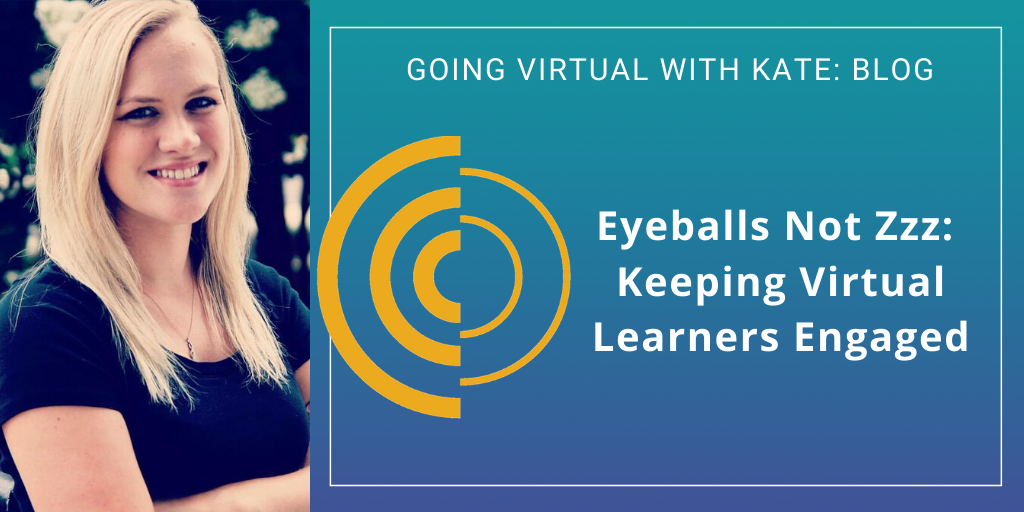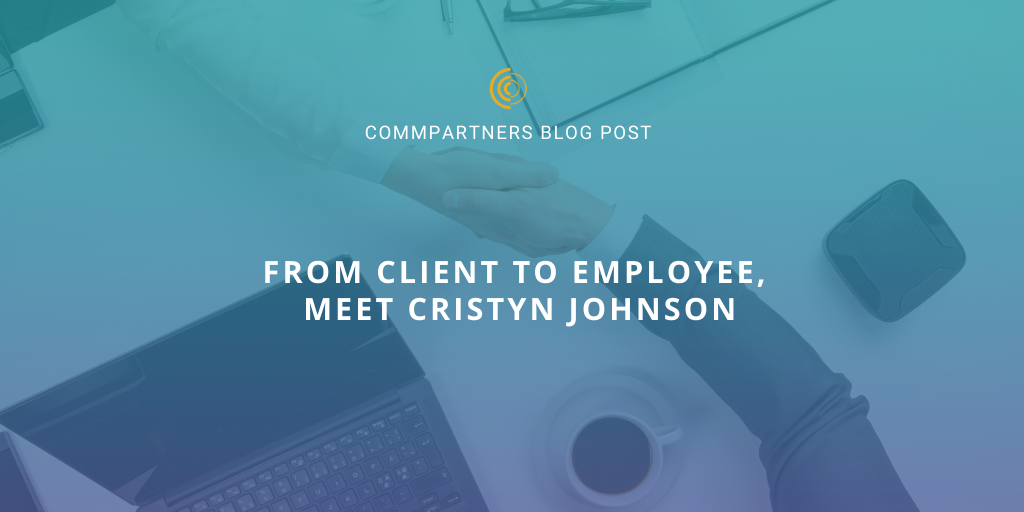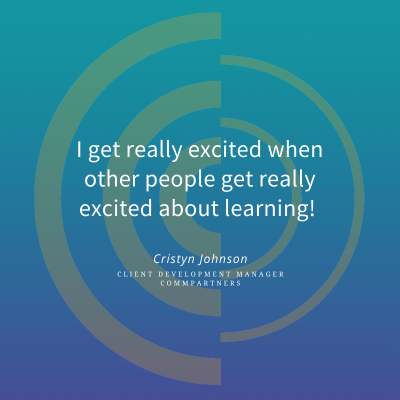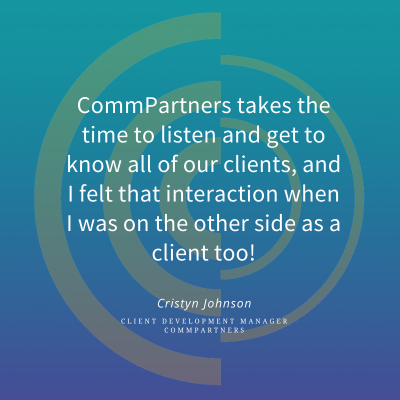
by Julie Ratcliffe | May 14, 2020 | Blog, FaceBook Live
Keeping your learners attention during a Virtual Conference or a Webinar can be a challenge. You had an awesome, 3-day conference planned with all these great activities to make your event interactive, but now you’re forced to go virtual. Attendees who were once going to be bright, shining faces right in front of you, are now faceless figures behind a screen. Are they paying attention to the presenters, or are they scrolling through Instagram? Or are they taking a Buzzfeed quiz to find out which Mamma Mia song fits their personality?
Tracy King, CEO and Chief Learning Strategist of InspirEd, has tips to ensure you’re getting eyes and ears during your virtual eLearning event and not daydreamers.
Session Lengths and Breaks
Even if your learners typically work from home, a Virtual Conference can be a very different learning experience, “consuming content through a screen is fatiguing, and it’s a space we are not used to attending and focusing [on],” says Tracy. Design your sessions with your learners in mind, so your event doesn’t feel like an endurance marathon. When determining session length, consider learning outcomes and the medium, but generally, Virtual Conference sessions should be short about 30-45 minutes. If you plan to go longer, make sure you include interaction (more on that later) and breaks.
Breaks are essential. Presenters and learners need time to stretch, check email, grab a snack/drink, and the ever-necessary bio break. They won’t want to miss a single second of the stellar programming you lined up. To make sure you are giving your learners enough breaks, follow Tracy’s lead:
- 90 minute session = 5 minute break
- Half-day sessions = 15 minute breaks every 90 minutes
Let your learners know when to expect breaks and when exactly they start and stop. Stick to those times. Do not let stragglers derail your conference agenda. If the break is 10 minutes, begin promptly after those 10 minutes are up.
If you’re still unsure of how to design your session, Tracy suggests following the 10×10 Rule: 10 minutes of content and 10 minutes of interaction. The idea is not to be regimented and constantly alternating but for equal parts presentation to equal parts interaction. Speaking of interaction…
Make it Interactive
Don’t shy away from interactivity just because your conference is virtual. Depending on the platform you chose to use for your conference, there may be a host of tools for you to make session hands-on. CommPartners integrates with Zoom, which features tools like a chatbox, whiteboard, Q&A, and polling. These tools can be used as ice breakers, but they should be used to advance learning as well, says Tracy:
- Use the whiteboard in small groups for collaborative projects.
- Poll learners to gauge opinions.
- Facilitate discussion and reflection in the chatbox.
Within CommPartners’ Elevate LMS, or Learning Management System, there are opportunities to make the website interactive for learners:
- Include discussion boards to facilitate conversation, include industry experts as discussion moderators.
- Embed a welcome video introducing your learners to the conference. Make it interactive by giving them a fun task to complete, like asking them to comment where they are joining from on the discussion board.
- If your conference has an Exhibit Hall, utilize chat features so exhibitors and attendees can converse at a booth.
- Create a site scavenger hunt to encourage your learners to explore the whole website, directing them to important features. The winners can receive a prize!
Put the Net in Networking
One aspect of conferences that attendees look forward to the most is the opportunity to network and socialize with other industry professionals. Just because your conference has switched to a virtual platform doesn’t mean the opportunity has to go away. Take advantage of the popular Virtual Happy Hours. Try focusing each Happy Hour around a specific topic, profession, or a previous session so they don’t become overwhelming with too many participants.
Another way to keep the conversation going is to add specific discussion boards or chat rooms to your website specifically dedicated to networking and socializing. Direct your learners to those areas of your website during downtime in the schedule or after learning has taken place. Learners are welcome to take their conversations offline, away from the conference as well.
Going virtual doesn’t mean you need to throw everything you have planned out the window. It is an opportunity to get creative with the tools and the platform you’ve selected. Your learners registered for your conference, ready to consume your quality content, which has not changed. Following these tips will make your learners comfortable, keeping them engaged for the length of the conference.
Click here for more information
For more information about how to engage your learners, contact marketing@commpartners.com. Learn more about education strategy and learning design as well as find Tracy King at inspired-ed.com.

by Julie Ratcliffe | Jan 30, 2020 | Blog

Cristyn Johnson is the newest addition to the CommPartners team. She may be a new name to some clients, but she no stranger to Elevate or CommPartners. Cristyn is a former client who has joined us as a Client Development Manager. She told me a little bit about her position, what it was like to transition from client to team member, and what unique perspectives she brings to the table.
JR: What is your job title, and what will you be doing for CommPartners?
CJ: I am a Client Development Manager. I will be working with all existing clients – that includes Elevate, content capture, live-stream clients – helping them optimize their systems, brainstorming new ideas and initiatives they might be excited to embark on, and making sure they get the most out of our services.
JR: Exciting! What aspects of your new position are you looking forward to the most?
CJ: I am a huge professional development and learning nerd, so I am really looking forward to learning about all of the really cool projects and initiatives our clients are doing or could be doing with CommPartners.
JR: How about association education? What makes you excited working in this space?
CJ: I get really excited when other people get really excited about learning.

JR: Sounds like you’re in the right industry! So, you have the unique experience of coming to CommPartners as a former client, can you speak to what that transition was like?
CJ: In my previous position, I was managing our Elevate platform. As the position grew, I found myself drawn to helping others use the platform more effectively, think critically about how they use the platform, and how the end-users use the platform. So, it seemed serendipitous when this position at CommPartners became available where I could similarly help other Elevate administrators across the platform.
JR: Do you think that experience has given you a unique perspective you can use in your new position?
CJ: Absolutely! I think the association world is very unique with so many dynamics and strategies and ideas, and having that deeper knowledge is going to help me make more informed recommendations to clients. It also means, we can have a certain level of insight that we didn’t necessarily have before, new initiatives or new products can have an added association perspective built into the way they are created.
JR: Now that you’re working for CommPartners, what makes us unique compared to other online education companies you have worked with/have experience with?
CJ: CommPartners takes the time to listen and get to know all of our clients, and I felt that interaction when I was on the other side as a client too. That goes a long way in the association world because a lot of them are not-for-profit entities, other companies can write them off as a faceless name in a crowd – you don’t feel that with CommPartners.

JR: What’s a unique element of Elevate that really excites you?
CJ: Elevate has a module called Connect. It is a great way to connect all your users within your LMS. Where on a discussion board the conversation just kind of ends, the Connect Module allows you to create an interactive community with all of your Elevate users. Users can talk and share resources beyond single product interaction.
JR: Bonus question round! What is one movie you can watch over and over and over?
CJ: Slums of Beverly Hills!
Cristyn is looking forward to working with our clients to make sure they are getting the most out CommPartners’ products and services. If you have an idea you’d like to try out within your education services or feel like your education toolbox could use a refresh, contact Cristyn.
She is ready to find a new way to engage your learners or maybe better leverage what you already have.
Cristyn can be reached by email cjohnson@commpartners.com or phone (443) 539-4858.

by Aubrey Mellos | Sep 20, 2017 | Blog
By Mary Byers, CAE, CSP
According to Forbes contributor Mike Maddock, “In order to make a product or service everything it can be, it needs to be repeatedly soft launched with both internal stakeholders and external customers. This means literally sending the idea—be it a product or a service—into a limited part of the marketplace with the full understanding that it will be modified (perhaps extensively) based on how customers and consumers react.”
But this isn’t how most associations approach innovation. Most I’ve worked with see innovation as a beginning and an end rather than an iterative process. A beginning and an end is more comfortable because we start and finish. We’re able to cross something off the list—and then we move on. It’s less comfortable to be “in process” with a fluctuating launch date (especially when reporting to a board of directors) and uncertainty about what the final product or service will look like.
Maddock’s iterative approach can be summed up in one word: experimentation. And it’s a strategy I’m suggesting for associations, albeit an uncomfortable one.
Certainty is much easier to sell, both internally and externally. But innovation can be anything but certain. Often, it’s a messy, chaotic process. And who likes that?
Though we may not like it, achievers and innovators have found a way to live with the messiness of experimenting. Even more so, they’ve adopted a willingness to experiment as a strategy for moving their associations forward. There’s a lot to be experimenting with these days in the association arena:
- Hybrid dues models
- Product pricing and packaging
- Online & e-learning
- Face-to-face meeting innovations
- Video vs. printed communications
- Governance
Experimenting in the above areas is difficult because there’s so much at stake. But there’s even more at stake for associations that don’t experiment. Declining revenue, decreasing meeting attendance, and falling membership numbers are just the beginning. There’s also loss of influence and long-term sustainability to consider.
There are three things that making experimenting easier for associations:
- Do it regularly. A culture of continuous experimentation not only helps determine where you can gain momentum, it becomes an expectation. And when it is an expectation, it’s easier to get your board and staff to support you.
- Utilize soft launches. There’s a lot at stake with a big, splashy roll-out. Start with small, quiet experiments. The bigger the project, the more important this is.
- Make recalibration a habit. Moddock writes, “We’re only right when the market tells us so….The market will help us see and hear what we can do to be more right (and also help us eliminate all the things our customers—and potential customers—don’t like or don’t want).”
The willingness to experiment is both a habit and a mindset. It’s also a valuable strategy for associations in today’s rapidly changing landscape.
Mary Byers, CAE, CSP, shares additional strategy starters for busy association professionals in her new online learning series titled, Momentum: Strategy Starters for Today’s Association Professional at leadwiselearning.com. She is also the author of Race for Relevance: 5 Radical Changes for Associations.

by Aubrey Mellos | Sep 6, 2017 | Blog
By Mary Byers, CAE, CSP
I’m intrigued by the associations who are doing big things. It may be something internally to secure the health of the organization itself, something on behalf of members, or something for the greater good of the world. If you’re interested in making a leap on behalf of your organization, here’s how to do it:
Identify the leap. Mark Tomlinson, a retired association CEO, helped engineer four inter-related leaps on behalf of his former organization. Naming the leaps was the first step. Mark’s leaps were: redefining the community the association served, additional revenue, enhance product/service delivery mechanism and divestiture of capital assets. If you name it, you’re more likely to claim it.
Engage in a 90-day sprint. In short, a sprint requires you to set aside work so that you can focus on the most important work. I’ve written in depth about how to do this here. In all my years as a consultant, this is one of the most powerful concepts I’ve come across.
Aim for excellence. Jim Collins, author of Good to Great: Why Some Companies Make the Leap and Others Don’t, says, “Good is the enemy of great. And that is one of the key reasons why we have so little that becomes great.” Set your sights high and don’t settle. Members are attracted to excellence.
Recalibrate as necessary. The quest for excellence often is mistaken as the quest for perfection. Our desire to do things “right” often keeps us from trying and discourages continuous enhancement. Starting with the expectation that you WILL recalibrate makes it acceptable to do so (versus seeing recalibration as an admission of failure). I love this quote from author Robert Barult: “…taking a step backward after taking a step forward is not a disaster, it’s more like a cha-cha.” Come to the party ready to dance and you’ll succeed.
Declare your association an inertia-free zone from now on. It’s harder to leap when you have to gather the energy to do so. If your culture is one that supports, encourages and celebrates leaping (vs. protecting the status quo), you’ll see more people and teams getting the running start they need to leap. I like what Wharton Business School professor Rita Gunther McGrath says, “…allowing an existing structure to remain in place for too long creates inertia and results in and organization that is maladapted to the opportunities it finds.” Inertia is an innovation-killer so do whatever you can to discourage it.
Try a triple jump. Once you’ve got the momentum necessary to leap, keep going. Movement in one area often makes it easier to create movement in another. When one leap is complete, ask, “Where can we get leverage and momentum on behalf of the organization now?” Attempting a triple jump is a natural inertia-buster and increases the overall return on investment for your association.
Mary Byers, CAE, CSP, shares additional strategy starters for busy association professionals in her new online learning series titled, Momentum: Strategy Starters for Today’s Association Professional at leadwiselearning.com. She is also the author of Race for Relevance: 5 Radical Changes for Associations.

by Aubrey Mellos | Aug 22, 2017 | Blog
By Mary Byers, CAE, CSP
Meetings. Deadlines. The day-to-day work of running your organization. All of these get in the way of doing new work on behalf of your association. But new work is often necessary to create leverage and momentum—especially when you’re stuck in a business-as-usual environment. A 90-day sprint may be just what you need to get ahead. This time period is long enough to accomplish something big, but short enough to create a sense of urgency (one of the advantages of the sprint concept). Here’s how to use a 90-day sprint:
Clearly identify the purpose of your sprint. Are you setting aside time to develop a plan or implement one? Will you do a deep dive into a challenge such as declining revenue or meeting participation? Do you want to complete 90 days of research, either about your members or how other associations have done what you want to do? The more clearly you define your work, the more likely you will complete it.
The National Association of Healthcare Quality wanted to demonstrate that it was keeping up with evolving trends in healthcare quality by articulating evolving competencies for advanced and master practitioners. According to NAHQ CEO, Stephanie Mercado, CAE, “The quality space is crowded and being first to market is key, so our goal was to bring a quality product to market fast.”
Assemble your team. Though 90-day sprints can be done solo, the larger the project, the more likely you’ll need others’ help. If your project requires more than just you working on it, get buy-in from the people and departments you need before you begin so that you don’t lose time after the clock starts ticking.
Assign work. Identify who is going to do what. Be clear about the end goal so that your team is doing work that supports your goal. Productivity expert Peter Drucker says, “There is nothing so useless as doing with great efficiency that which should not be done at all.” I agree.
Create a feedback loop. Use an online productivity tool such as Basecamp, Asana or Teamwork Projects to share information and track progress all in one place. Use preset meetings to troubleshoot, review work and determine next steps.
Set aside any non-necessary work and put your head down. It’s hard to ignore incoming e-mails and calls (but easier to do if you turn off e-mail notifications and silence your phone) but a powerful way to boost productivity. (My personal e-mail notification has been turned off since 2011, though I check it several times a day.) Work in blocks to allow you to concentrate and avoid the time loss of task switching. Start your day with work related to your sprint and only check your e-mail once or twice a day during your sprint. This is counter to how America works but essential to making gains and achieving big things.
Take stock. Where are you at the end of 90 days? Is there still work to be done? What’s next? All of these are valuable questions when you reach the end of your sprint. The answers will help determine your next steps.
NAHQ launched one competency area every 90 days, for 6 cycles. When the association reached the last topic, it republished the previous 5 competencies and the final competency into one book called HQ Essentials. According to Mercado, “We sent the book to all members for free as part of a larger strategy to improve our value proposition. Members immediately put it to work, developing models for staff structure, competency based job descriptions, etc. The result for NAHQ was demonstrated relevance for our members and the ability for NAHQ to use the HQ Essentials as a product development framework for the future.”
Celebrate. Be sure to take time to celebrate when your sprint is over. Doing so will make it more likely that you’ll be willing to do another…after you take a needed break, of course!
Mary Byers, CAE, CSP, shares additional strategy starters for busy association professionals in her new online learning series titled, Momentum: Strategy Starters for Today’s Association Professional at leadwiselearning.com. She is also the author of Race for Relevance: 5 Radical Changes for Associations.









